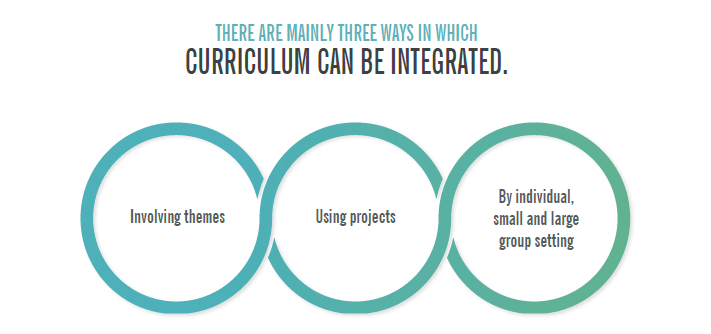

Ever wondered why we studied numerous subjects in our childhood? The list is long with Physics, Chemistry, Mathematics, Biology, History, Geography and Value Education being the significant subjects.
We studied these subjects as individual disciplines and did not learn about the relation between them. Our learning was more into isolated curriculum areas where there were barriers that restricted us from establishing a real-life connection with the learned concepts. This was because our teachers put focus on their respective areas of expertise and did not majorly talk about other academic disciplines or subjects.
This resulted in fragmented teaching, which isolates science from mathematics, language from values, music from social studies and art from history. However, integrating disciplines can change the face of education. It will pave a way to connect what is learnt in school to the real world rather than isolating facts and information to specified areas. After all, the world exists in totality.
‘When we try to pick out anything by itself, we find it hitched to everything else in the universe.’ – MUIR, 1911
An integrated approach towards teaching connects different areas of study by cutting across subject-matter lines with emphasis on unifying the concepts. It is crucial for the 21st century learners to understand the cross-disciplinary connection in academics. There are numerous advantages of adopting an integrated approach towards teaching. Let’s assimilate a few of them.
By learning concepts in an integrated format, students can learn to view and think about ideas from myriad aspects. Holistic teaching results in broadening of thinking arenas. It develops the essential intrinsic skills of learning.
A study conducted by NASA over a period of years showed that when children join preschool, 98% of them think differently, however, the number drops to 2% by the age of 25. Thus, it emphasises the urgent need for a curriculum that helps foster creativity and divergent thinking skills in their most crucial years of learning. Integrated learning tickles the creative muscles of the learners because they are required to think about various aspects together.
Since everything in the environment is interrelated and intertwined, integrated curriculum encourages students to establish connections in real-life contexts. This is an essential element of integrated learning as it helps students to understand the world through a refined lens. Integration acknowledges and builds on the relationship that already exists among all things.
‘The brain learns best in real-life, immersion-style multi-path learning…fragmented, piecemeal presenting can forever kill the joy and love of learning.’ – Jensen, 1996
Integrated curriculum offers a structured balance of various activities, content and experiences. Learning primarily happens by an amalgamation of projects, themes or topics. While planning lessons, the teacher blends various disciplines together through a divergent array of activities which may involve mass participation, large group setting or small group setting, playtime, reading time and exploring time.
The key to planning an integrated child-centred curriculum is balance⎯a balance among large group, small group and individual activities, a balance in curriculum and content areas and a balance between teacher-directed and child-initiated experiences. – Schwartz & Pollishuke, 1991
There are mainly three ways in which curriculum can be integrated.
Considering the age and learning tendency of children, themes can be developed across the grades to integrate curriculum with teaching and learning. Let’s consider a generic theme which students may learn about when they join school, i.e. community helpers. The theme can be altered to fit the needs of teachers and children at different grades and also accommodate children of various learning capabilities. Children have opportunities to collaborate with peers. Resources related to any topic can be made available everywhere in the classroom. Students can easily access the materials and use them throughout the day, thus inculcating self-motivated learning.
Projects involve investigation on a topic using available resources and incorporating skills, knowledge and dispositions needed to accomplish that goal. Projects enable students to use their depositories of knowledge and skills acquired over a period of time to achieve a set objective. Projects, as part of the curriculum, are highly recommended as a way to help students understand the concepts.
Another way in which educators can plan and integrate curriculum, teaching and learning is by allowing students to work in small groups, large groups or on an individual level. The goal behind such activities is to make students independent and self-directed learners. Teachers offer resources and teach students the skills and strategies needed either individually or through class instruction.
Thus, it is very important for educators, parents and everyone in the education fraternity to realise the need and importance of integrating different academic disciplines and break off from setting perimeters for student learning.
Examinations are an important aspect of every student’s academic life. It is important to know…
In today's rapidly evolving educational landscape, the effective management of educational institutions has become paramount.…
In the digital age, educational institutions are increasingly embracing technology to streamline their administrative processes…
All school administrations rely on multiple systems spread across numerous platforms for its academic and…
The question of child safety is one which causes much tension for both the school…
You all would acknowledge that running a school is a mammoth task. It’s not just…